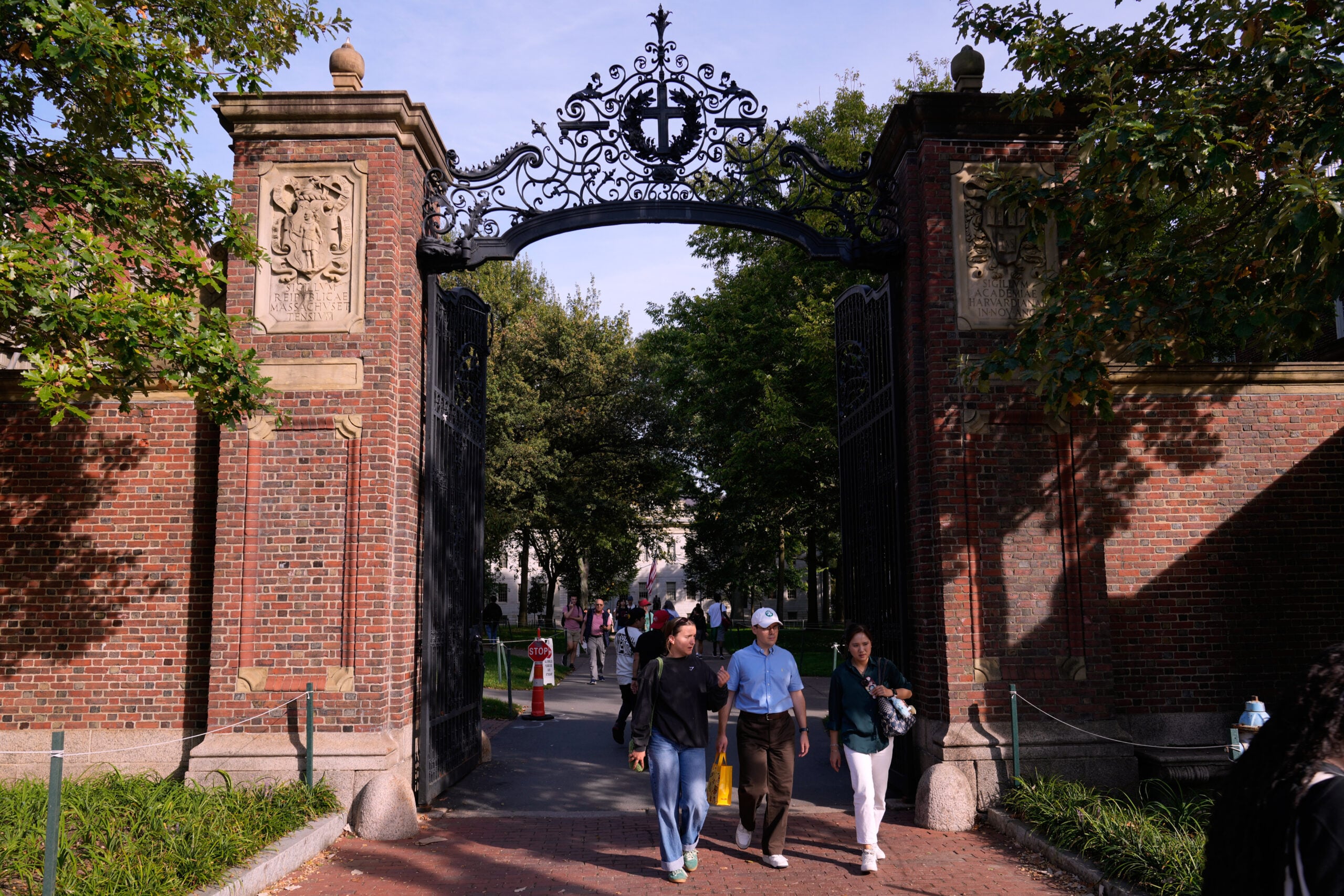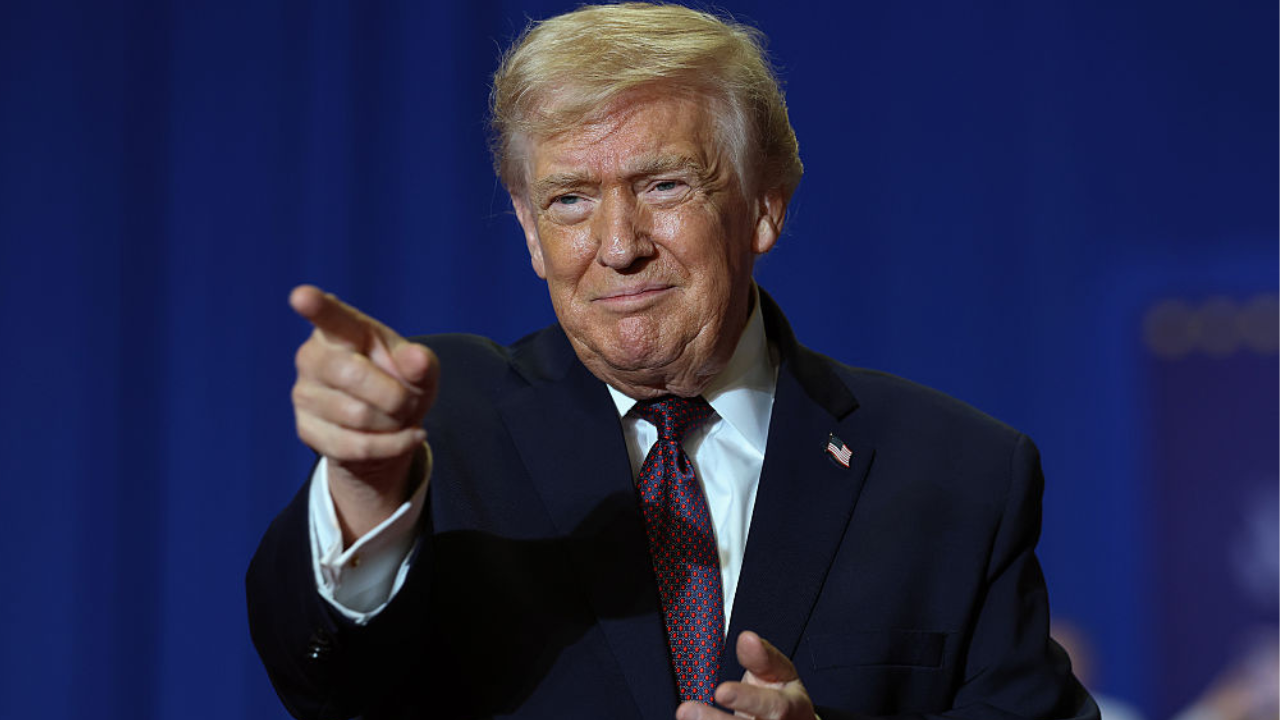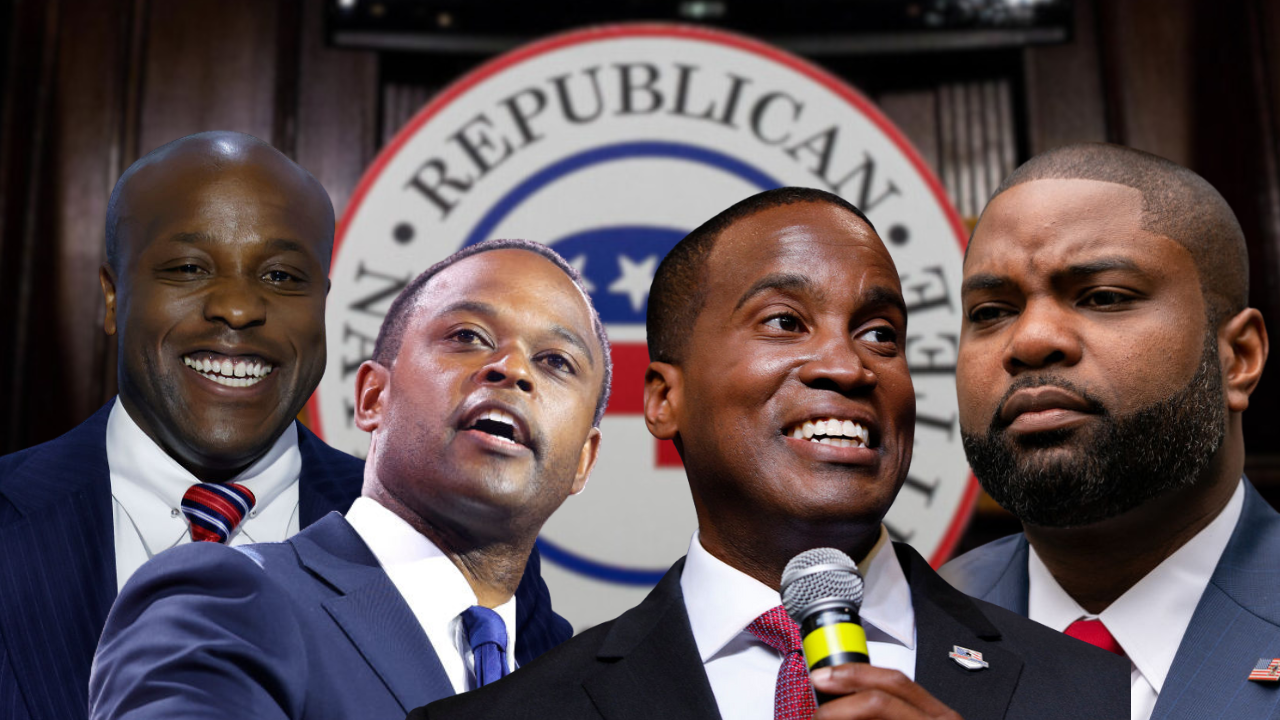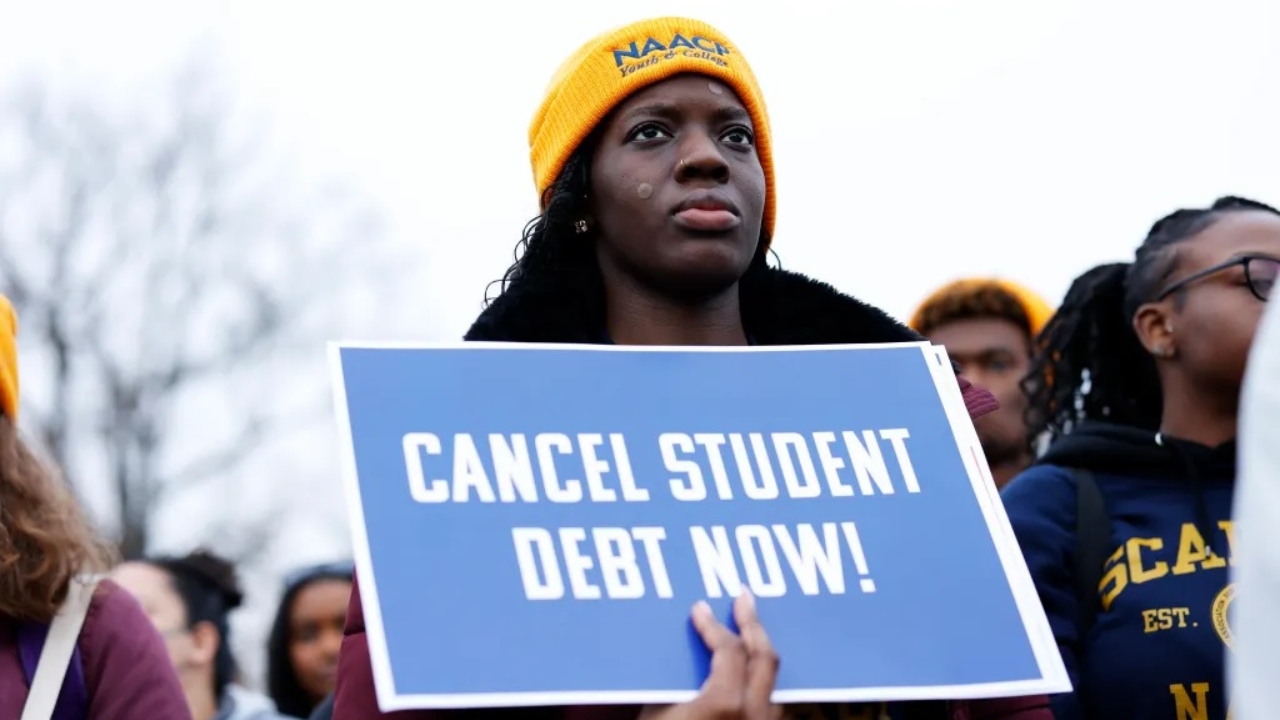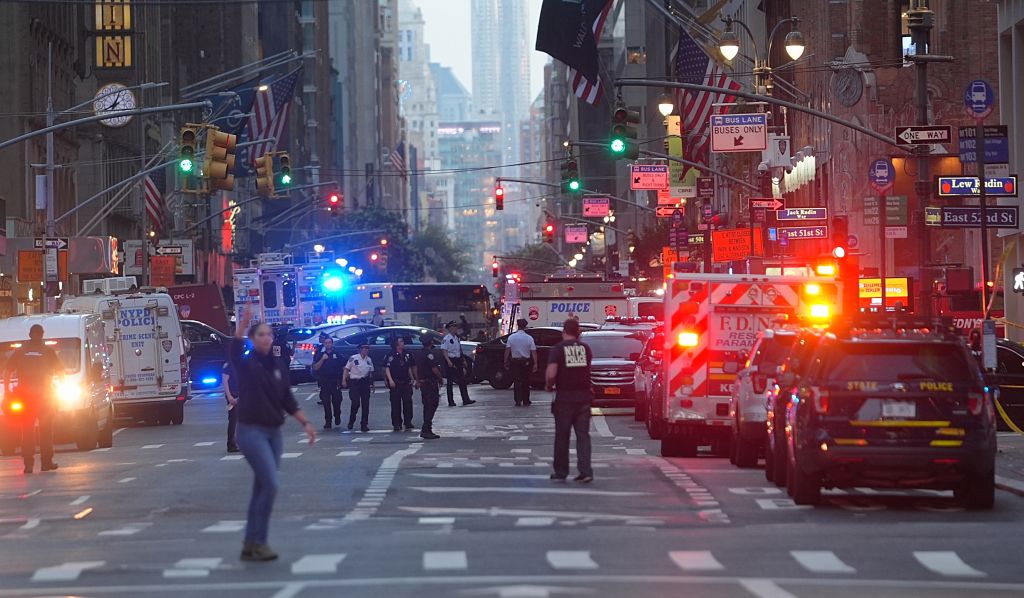The ‘endless’ opportunity of USC football


‘The Most American Sport’ is a four-part series exploring the culture of college football. | Part 1: Texas A&M | Part 2: Penn State
LOS ANGELES – Andrew Sykes marched past the eight Heisman trophies, through 137 years of football history, and exited beneath the arched Roman columns of Heritage Hall. His hands blurred over his drums. Another football Saturday at the University of Southern California; another journey to opportunity.
Before each USC home game, the Spirit of Troy marching band assembles outside Heritage Hall, which holds the history of Trojan athletics going back to its first football game in 1888. The band performs for a throng of alumni and students, then begins a mile-long march to the Los Angeles Memorial Coliseum, stopping along the way to blast out more songs.
I came to USC’s campus to continue Andscape’s exploration of the culture of college football – the traditions that reflect the ways of our nation and make it “The Most American Sport.” The band’s march to the stadium is a microcosm of a timeless American experience: the pursuit of opportunity, progress, and happiness.
USC is 5-2 this season after late turnovers led to a loss Saturday at Notre Dame. The week before, I saw them beat Michigan in the Coliseum under a cloudless Los Angeles sky, urged on by Sykes, the Spirit of Troy, and 75,500 fans. Under fourth-year head coach Lincoln Riley, a native of Muleshoe, Texas who was enticed to leave Oklahoma for Los Angeles, the Trojans are trying to regain their historical place among college football’s elite.
Antranik Tavitian for Andscape

“The American dream? I mean, it’s opportunities just like this,” Sykes, a senior computer engineering major from La Mirada, California, who transferred to USC from Cal State-Long Beach, told me a few days later. “Never did I think I was going to be at this university, playing for this amazing band, getting all the travel opportunities I’m getting, just being surrounded by these resources and this community.”
“American” is a loaded term these days, but some common themes remain: the value of hard work; the reality of diversity; the belief that progress is always possible – and our inalienable right to the pursuit of happiness.
USC holds a unique position in college football because of its location in the middle of Los Angeles, five miles from downtown skyscrapers and part of the South Central neighborhood made famous by generations of Black and Latino athletes, musicians, and cultural figures. For generations, people have journeyed to Los Angeles to chase their dreams – like Riley, who has described L.A. as “living in a dream world.”
“It honestly feels like a dream to wake up in paradise every single day,” Riley once said.
For USC cornerback DeCarlos Nicholson, born and raised in Petal, Mississippi, Los Angeles is a place he had only imagined. “You got all these spots where movies were filmed. Love and Basketball was made here, I’ve been watching Love and Basketball since I was young. … I mean, this building right here,” Nicholson said, gesturing behind him to the new $200 million football facility under construction. “It’s just an awesome advantage.”
I asked Nicholson what kind of opportunity USC represents. He responded with one word:
“Endless.”
About those eight Heismans: Arranged in a semicircle in Heritage Hall, the lineage begins with Mike Garrett in 1965, followed by O.J. Simpson, Charles White, Marcus Allen, and Reggie Bush – all tailbacks, which explains why USC is known as Running Back U. Then comes three quarterbacks: Carson Palmer, Matt Leinart, and 2022 winner Caleb Williams.
USC owns more Heismans than any other school. It has 14 Pro Football Hall of Famers – no other school has more – and claims 11 national championships. The accomplishments catalogued inside Heritage Hall range across sports — USC athletes have won more Olympic medals than any other college, for example, and women from Allyson Felix to Cheryl Miller are prominently celebrated – but football reigns supreme.
After winning four national championships in the first half of the 20th century under coach Howard Jones, USC reigned through the 1960s and ‘70s under John McKay, who won four titles, and John Robinson, who added another. USC embraced Black athletes much more quickly than segregationist Southern powerhouses, creating an unmistakable aura across the country.
“I am very much here because of USC football,” said Todd Boyd, the USC professor whose scholarship on sports and culture, and his appearances in numerous documentaries, have earned him the moniker “Notorious PhD.”
In 1974, Boyd was 10 years old, watching television on a freezing November day in his home town of Detroit. USC was playing Notre Dame in the Coliseum. After the Trojans fell behind 24-0 in the first half, Anthony Davis took the second-half kickoff 102 yards to the end zone, igniting a 55-24 victory.
“Anthony Davis, Charles White, Ricky Bell, those cats were what drew me, because when I looked on television and I saw USC they had a different vibe,” Boyd said.
Antranik Tavitian for Andscape
“The weather was nice, dudes had ‘fros and just the way they were repping on the sideline, I’m like, ‘That just looks like the place to be.’ … I told myself at 10 years old, ‘I’m going to USC.’”
The program slipped in the 1980s and ‘90s, despite producing NFL stars like Junior Seau, Willie McGinest, Tony Boselli and Keyshawn Johnson. Then head coach Pete Carroll arrived, reviving the programs with back-to-back championships in 2004 and ‘05. USC narrowly missed a third title in a loss to Texas and quarterback Vince Young in the 2006 Rose Bowl, which many call the greatest college football game ever played.
During Carroll’s run from 2001-2009, he embraced hip-hop, which was just then going mainstream, and leaned into the celebrity nature of Los Angeles. With the likes of Snoop Dogg and Denzel Washington on the sidelines, USC ran the city and dominated the national narrative.
“It’s all about merging that traditional college atmosphere and spirit and imagery with being in L.A.,” said Boyd, who had field passes during the Carroll era and saw it all up close. “Standing in that end zone was like being courtside watching the Lakers. You don’t get that in Alabama. You don’t get that in Auburn. You don’t get that at Ohio State. You don’t get that at Michigan.”


Antranik Tavitian for Andscape
It didn’t last in L.A. Reggie Bush was receiving the type of payments that are now permitted in college sports. With the NCAA preparing to punish USC, Carroll left for the NFL. USC was stripped of its 2005 title, and Bush had to forfeit his Heisman. (The Heisman organization returned the trophy to Bush in 2024.)
A postseason ban and reduced scholarships sent USC spinning into a decade-plus of coaching turmoil. Lane Kiffin got fired on the airport tarmac; Ed Orgeron went 6-2 as the interim coach but got passed over for Steve Sarkisian, who then got fired due to struggles with alcohol. Clay Helton had several forgettable seasons.
Now Riley, in his fourth season at the helm, is under pressure from a restless Trojans community. USC has never made the College Football Playoff; getting there this season will be tough, sitting on two Big Ten conference losses with upcoming games at Nebraska and Oregon. If Riley doesn’t improve quickly, the massive buyout on his 10-year, $110-million contract won’t save him.
“If Ohio State’s not playing well, people are still gonna go watch Ohio State football games … that’s the only show in town,” Boyd said. “If the USC football team is not any good, nobody’s gonna show up to the Coliseum because you got other options. You can surf. You can go hiking. You can watch other teams. You got to win in L.A. to be relevant.
“If it’s championship-level aspirations, we’re gonna check for you. If you’re just doing OK, well, we got other things to do.
“That’s L.A.”

Antranik Tavitian for Andscape

Antranik Tavitian for Andscape
The Spirit of Troy finished their concert outside of Heritage Hall and set off on their march. On the drum line, Sykes’ stick flourishes oozed confidence as he pounded out rhythms on his quad drums. Turning right to pass between the Annenberg School of Communication and the Bing Theater, the band entered EF Hutton Park, which was fenced off for an exclusive pregame event.
USC’s tailgate scene does not include cars. Revelers cart their grills, tables, tents, food and beverages onto campus by hand, then set up in designated areas on the immaculate campus of beige and faded-red brick buildings.
“It’s like walking through a mini-city,” Sykes said. “There are these tall buildings that are just towering over you. Look to your left, look to your right, you see the red bricks. It’s really just a nice view. I love walking around here. I mean, it doesn’t get too much better than this.”
The band belted out songs in the main campus plaza, where Tommy the Trojan has stood guard for 95 years, and set off down Trousdale Parkway, a pedestrian walkway through the center of campus. The parkway ends at Exposition Gate, where band members paused to kick a flagpole, a campus ritual that stems from the band warning drummers not to march into the pole.
Past the pole, across the train tracks running down the middle of the street, the USC campus ends.
Welcome to South Central.

Antranik Tavitian for Andscape

Antranik Tavitian for Andscape
Keyshawn Johnson, in his own telling, was a raggedy, nappy-headed boy in the early 1980s, living in the wide, flat expanse of blocks surrounding USC’s campus. Back then there were no fences and security stations encircling the campus. The gate to the football practice field was wide open. Little Keyshawn and his friends could walk right in.
At practice, and in the 502 Pizza spot in the University Village strip mall, Keyshawn got familiar with players like Ronnie Lott, Marcus Allen, and George Achica. Keyshawn embedded himself with the team – helping the equipment manager, stuffing envelopes for sports information director Tim Tessalone, hanging out with assistant coaches Hudson Houck, Dave Wannstedt, and Norv Turner.
The coaches had no idea this kid would grow into a 6-foot-4, 210-pound terror at receiver and No. 1 NFL draft pick. All they knew was that him being around the football team was better than running the streets of South Central, where crack and gangs were exploding into an unprecedented apocalypse.
“This kind of thing is not gonna happen at any other program because USC is the only blue blood program that’s in the ‘hood,” Johnson told me. “Notre Dame, Penn State, it ain’t gonna happen.”
When Ted Tollner succeeded Robinson as head coach in 1983, the open-door policy continued. But when Larry Smith took over in 1987, he cut off connections to the city. That’s when Johnson started getting into trouble and ended up spending time in jail. After turning his life around, he graduated from Dorsey High School and tore up the field at West L.A. Community College.
Antranik Tavitian for Andscape
As one of the nation’s top recruits, Johnson was taking recruiting trips to top programs across the country, including Washington, which was coming off a national championship, and the University of Miami. That’s when USC assistant coach Dennis Thurman, who knew Johnson from back when his hair was nappy, told him: “Go eat them people’s food, boy. You know where you belong.”
Johnson chose the school less than a mile from home, but an incalculable journey from where kids from South Central were expected to go.
“It was the opportunity to be great,” Johnson said. “It was the opportunity to get a badass education, second to none. The connections were off the charts. I knew I was going to end up in media – Tim Tessalone told me when I was stuffing envelopes for him.
“I say this all the time: If USC is recruiting you, you’re gonna go to USC. And if you don’t go USC, it’s probably because they’re not recruiting you.”
In the years since Johnson played there, walls have gone up and gentrification has crept outward. But the neighborhood, mostly Black and Latino, is still there.
Just a few blocks southwest of Exposition Gate, I found vast grids of the small one-story homes and low-rent apartments made famous in music videos and films. Bars cover first-floor windows. Dogs bark at night. People are up and headed to work early, driving Nissans and Hyundais past strip malls, storefront churches, “We Accept EBT” burger joints, and beauty supply stores. The street names evoke old stories from gang culture – Hoover, Van Ness, Normandie, Vermont.
College football, at the elite level, can be misleading. The playing field is a racial melting pot. But the students on campuses in the heartland or the Deep South, and the college towns themselves, hardly ever mirror the diversity on the field. USC, however, is inseparable from the powerful, emphatically Black presence of South Central.
“USC felt comfortable with us. They felt welcoming to the inner city,”Johnson said. “There’s other universities that don’t feel comfortable and safe with how we approach things. Because I’m not gonna change as a Black man in America.
“When you think about it, there was no other place for me to go.”

Antranik Tavitian for Andscape
There was no other place King Miller wanted to go.
The running back and his twin brother, Kaylon, an offensive lineman, grew up near USC’s campus. Their father loved the team and brought his sons to games at the Coliseum. Their cousin Olijah Griffin, son of the rapper Warren G, was a starting cornerback for the Trojans. Coming out of high school in 2024, King had scholarship offers from mid-major schools, but when USC said the twins could join the team as preferred walk-ons, they didn’t hesitate.
Against Michigan, Miller entered the game after the two backs ahead of him went down with injuries. He proceeded to run for 158 yards and a touchdown against Michigan’s seventh-ranked run defense, powering the Trojans’ 31-13 win. His full scholarship is on the way.
After his breakout performance, I asked Miller to describe his opportunity at USC.
“Everybody has their own goals, their own things that fulfill them in life,” he said. “Mine personally? Just doing what I’m doing now. Going to my dream school, playing for my teammates and for my family.
“That’s my testament to the American dream.”
Antranik Tavitian for Andscape
Before the kickoff against Michigan, the Spirit of Troy crossed the train tracks running along Exposition Boulevard, marched into the city-owned Exposition Park, and paused for another performance outside the stadium. Finally, about an hour after leaving Heritage Hall, the band entered the Coliseum.
The drumline played a slow cadence, building energy and volume. Skyes felt the familiar rush of adrenaline. The band emerged from the tunnel, at full blast, into the bright Los Angeles sunlight.
Another opportunity lay ahead.
—
ESPN senior college football writer Adam Rittenberg contributed to this report.
The post The ‘endless’ opportunity of USC football appeared first on Andscape.
What's Your Reaction?
 Like
0
Like
0
 Dislike
0
Dislike
0
 Love
0
Love
0
 Funny
0
Funny
0
 Angry
0
Angry
0
 Sad
0
Sad
0
 Wow
0
Wow
0








